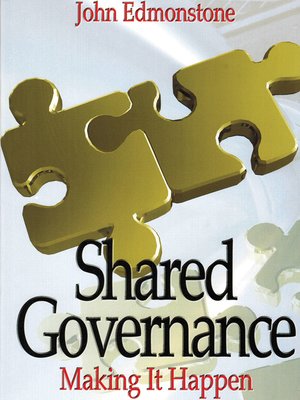
Sign up to save your library
With an OverDrive account, you can save your favorite libraries for at-a-glance information about availability. Find out more about OverDrive accounts.
Find this title in Libby, the library reading app by OverDrive.



Search for a digital library with this title
Title found at these libraries:
| Library Name | Distance |
|---|---|
| Loading... |
There are three major audiences for this book. The first is made is of National Health Service Trust Chief Executives, Nurse Directors, Medical Directors, Human Resource Directors and also leaders of Workforce Development Confederations in England and regional Workforce Development Groups in Scotland. The onus is firmly on them in the early years of the 21st century to resource, develop and progress the empowerment of front-line clinical staff in health care organisations and to enable devolved decision-making processes much closer to the patient. Shared Governance offers a proven and practical means of making that happen and this book should give them some robust tools to take this forward. The second audience are those people within NHS Trusts who are concerned with Clinical Governance on a day-to-day basis. The best guarantee of the quality of health care probably does not lie in a regime of inspections, assessments, appraisals and reviews (although they do have their place), but instead with clinical professionals regularly and systematically reviewing their practice and seeking to improve it. Shared Governance provides a pragmatic framework within which that process can take place and a means of actively involving the 'big battalions' of clinical staff. The third and final audience are the Shared Governance Co-ordinators and the Chairs, Deputy Chairs and Secretaries of Shared Governance councils. They are the 'poor bloody infantry' of Shared Governance and the difference between its success or failure. For them this publication is intended to be a helpful compendium or source-book from which they can draw and adapt material to suit their own local circumstances in as flexible a manner as possible.







